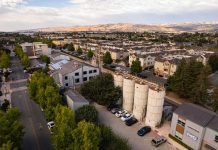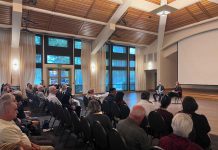Every poll shows that most Californians believe their state
government is dysfunctional, plagued with scores of hard-line
conservatives and liberals who almost always refuse to compromise,
acting as if political party principles and loyalties are more
important than the good of the people of California.
Every poll shows that most Californians believe their state government is dysfunctional, plagued with scores of hard-line conservatives and liberals who almost always refuse to compromise, acting as if political party principles and loyalties are more important than the good of the people of California.
Voters can start to fix this less than two months from now, when they vote on Proposition 14, the open primary proposition reluctantly placed on the June ballot by state legislators as part of a 2009 budget deal. The budget won a deciding vote from Republican state Sen. Abel Maldonado of Santa Maria only after his colleagues agreed to give voters a shot at an open primary.
This will be the third time in the last 14 years that Californians have voted on open primaries. The so-called “blanket primary” proposition passed as an initiative in 1996, mandating that all candidates be placed on the primary ballot together and allowing all voters to participate in whichever party’s primary they liked. That system produced several moderate winners in districts with voter registration leaning heavily to one party or the other, and the two major parties joined in getting the U.S. Supreme Court to disallow the system.
The system proposed this time is virtually identical to a plan voted on as Proposition 62 in 2004, when the two major parties again combined to defeat it.
Like the blanket primary, it would see all candidate names listed, but instead of the top vote-getter in each party moving on to the November general election, the two top overall vote-getters would advance. So there could be some districts where two Republicans would fight it out in November and others with two Democrats.
Neither the perception of dysfunction nor realities like late budgets with significant deficits, furloughs for state employees and constricted hours at state parks will change immediately if this passes, but there is a solid chance for gradual and healthy change over a relatively short time if Proposition 14 passes.
The current reality of Republican primaries dominated by extreme conservatives and Democratic ones controlled by extreme liberals offers little chance of getting compromisers into office. Most of the eventual winners never have to appeal to voters outside their own party, as districts are drawn to favor one side or the other quite heavily. But put two Republicans up against each other and the election outcome would be determined by the Democratic and independent minorities in their district, with the converse likely in strongly Democratic districts.
No wonder the party brass and the true believers on both sides hate this idea so much. They often say they object to open primaries (often called a “top two” system) because it would keep minor parties like the Greens and the American Independents off the fall ballot. But do those parties deserve places on the runoff ballot when their registration numbers and their actual vote count in almost all elections is a small fraction of the major ones? This system allows minor party candidates as much room to qualify for runoffs as anyone else – if they can appeal to voters.
Two neighboring state Senate districts in the northernmost parts of California offer fine examples of the advantages of a top two system. In the Fourth District, covering some or all of counties like Shasta, Butte, Siskiyou and Placer, just short of 44 percent of registered voters are Republican, with 32 percent Democrats and the rest mostly independents. The two leading candidates to succeed a termed-out incumbent here both have impeccable conservative Republican credentials and whoever wins their contest will almost automatically get the Senate seat.
But if they had to face each other in a runoff – and there’s a good chance that in an open primary both would draw more votes than any Democrat – they would have to appeal to the 56 percent of voters who are not Republicans and thus take fewer hard-line positions or risk defeat.
It’s just the reverse in the Second District, including all or much of Humboldt, Sonoma, Napa and Mendocino counties. Democrats dominate with slightly fewer than 50 percent of registered voters, while Republicans are at barely 24 percent. In a top two system, both runoff candidates might well be Democrats, and their eventual contest could be decided by the 50 percent of voters who are not.
In both cases, candidates would be forced to appeal to people outside their party, with a different ideological take. They would become accustomed to compromise before they reached Sacramento.
Because of the power of incumbency, it would take awhile before the full effect of open primaries is felt. But it would surely happen, just as it was beginning to occur before the blanket primary got the boot.
Which means that if voters really want effective government, they’ll see past the phony arguments the major parties constantly throw up against open primaries and vote yes on Proposition 14.
E-mail Thomas Elias at td*****@*ol.com. His book, “The Burzynski Breakthrough,” is available in soft cover fourth edition. For more columns, visit www.californiafocus.net







